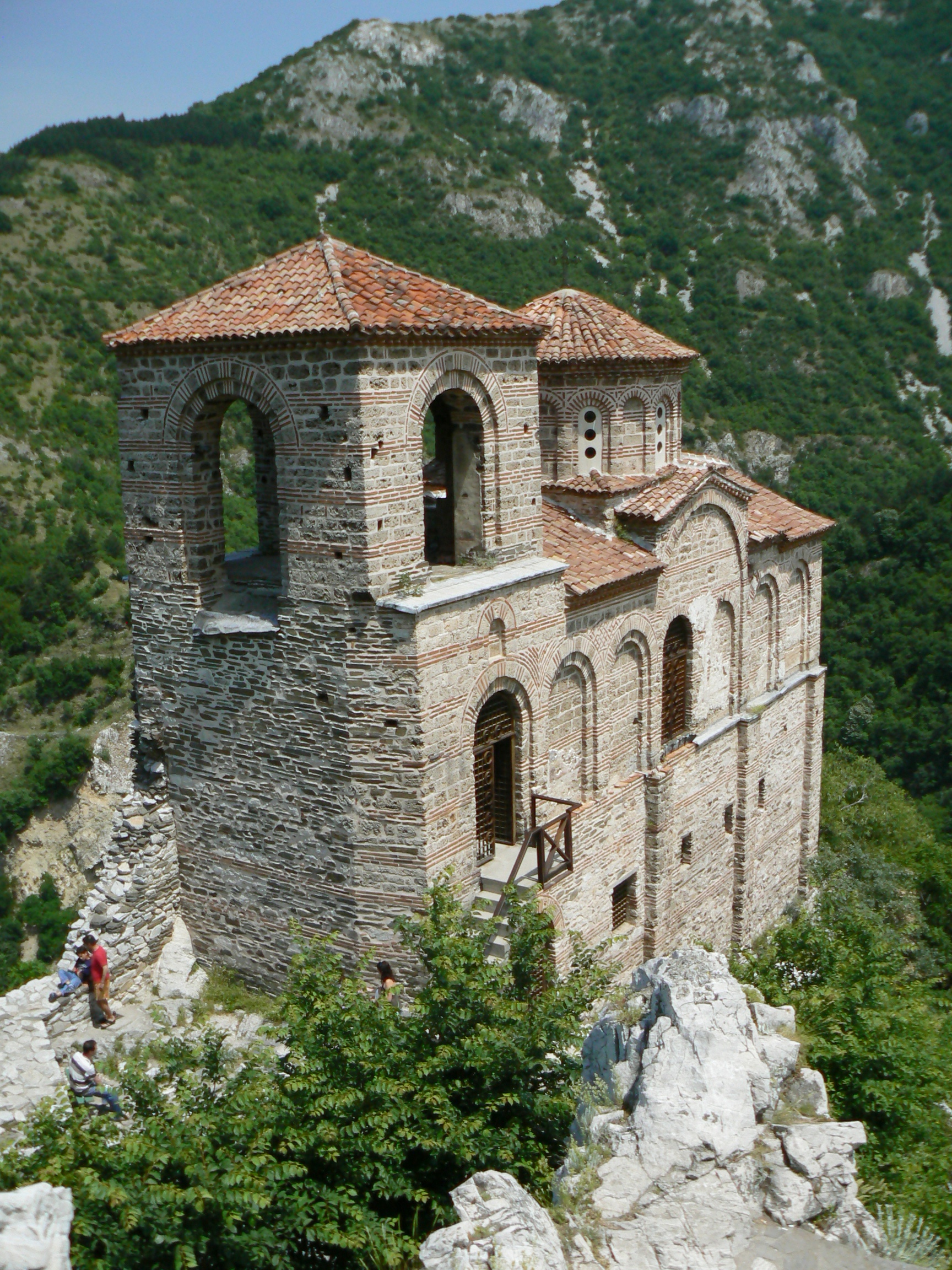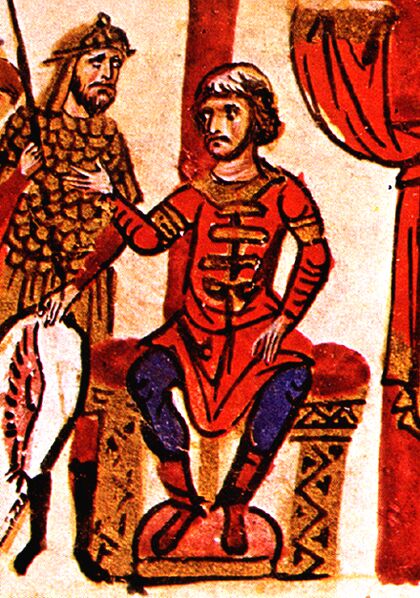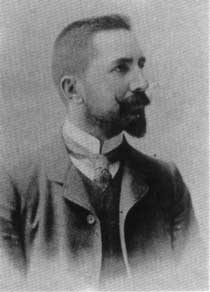|
Asenovgrad
Asenovgrad ( bg, Асеновград ) is List of cities and towns in Bulgaria, a town in central southern Bulgaria, part of Plovdiv Province. It is the largest town in Bulgaria that is not a province center. Previously known as ''Stanimaka'' (; el, Στενήμαχος), it was renamed in 1934 after the 13th-century tsar Ivan Asen II. Asenovgrad also includes the districts of Gorni Voden and Dolni Voden, which until 1986 were separate villages. According to the census data of 2021, the population of the city is 47 815 people. Above the town are the remains of the Asen Fortress, an old fortress that was strengthened under Tsar Ivan Asen II and turned into an important military post in the defense of the southern borders of the Second Bulgarian Kingdom. The city is known for its many churches, monasteries and chapels and is often called Little Jerusalem. It is also known as the "City of Bridal Gowns" because of the large number of ateliers and shops for wedding dresses and acce ... [...More Info...] [...Related Items...] OR: [Wikipedia] [Google] [Baidu] |
Plovdiv Province
Plovdiv Province ( bg, Област Пловдив: ''Oblast Plovdiv'', former name Plovdiv okrug) is a province in central southern Bulgaria. It comprises 18 municipalities (общини, ''obshtini'', sing. общинa, ''obshtina'') on a territory of Bulgarian Provinces area and population 1999 — National Center for Regional Development — page 90-91 with a population, as of February 2011, of 683,027 inhabitants. The province is named after its administrative and industrial centre — the city of . Geography [...More Info...] [...Related Items...] OR: [Wikipedia] [Google] [Baidu] |
Asen's Fortress
Asen's Fortress ( bg, Асенова крепост, ''Asenova krepost''), identified by some researchers as Petrich (Петрич), is a medieval fortress in the Bulgarian Rhodope Mountains, south of the town of Asenovgrad, on a high rocky ridge on the left bank of the Asenitsa River. Asen's Fortress is above sea level. History The earliest archaeological findings date from the time of the Thracians, the area of the fortress being also inhabited during the Ancient Roman and Early Byzantine period. The fortress gained importance in the Middle Ages, first mentioned in the statute of the Bachkovo Monastery as ''Petrich'' in the 11th century. The fortress was conquered by the armies of the Third Crusade. It was considerably renovated in the 13th century (more precisely 1231) during the rule of Bulgarian tsar Ivan Asen II to serve as a border fortification against Latin raids, as evidenced by an eight-line wall inscription. The foundations of fortified walls—the outer ones being ... [...More Info...] [...Related Items...] OR: [Wikipedia] [Google] [Baidu] |
List Of Cities And Towns In Bulgaria
This is a complete list of all cities and towns in Bulgaria sorted by population. Province capitals are shown in bold. Primary sources are the National Statistical Institute (NSI) and the Bulgarian Academy of Sciences. The largest city is Sofia with about 1.3 million inhabitants and the smallest is Melnik with about 300. Smallest towns are not necessarily larger than all villages as many villages are more populous than many towns, compare Lozen, a large village with more than 6,000 inhabitants. List See also *List of villages in Bulgaria * Nomenclature of Territorial Units for Statistics (NUTS) of Bulgaria *List of cities in the European Union by population within city limits *List of European cities by population within city limits References External links Map main cities in BulgariaaVisitmybulgaria.comMap of Bulgarian towns at BGMaps.com* Veliko Tarnovo of Bulgaria {{DEFAULTSORT:List Of Cities And Towns In Bulgaria Cities A city is a human settlement ... [...More Info...] [...Related Items...] OR: [Wikipedia] [Google] [Baidu] |
Tane Nikolov
Tane Nikolov ( bg, Тане Николов) (9 March 1873 – 19 January 1947) was a Bulgarian revolutionary and member of the revolutionary movement in Macedonia, Thrace and Pomoravlje. He was among the leading members of the Secret Macedonian-Adrianople Revolutionary Organization, Internal Western Outland Revolutionary Organisation and the leader of the Internal Thracian Revolutionary Organisation. Nikolov was also participant in the wars for National unification of Bulgaria. Early life Tane Nikolov was born in Haskovo in the family of Nikola Zhekov and Rada Stoeva who both come from the village of Gorski izvor near Dimitrovgrad. His nephew was to become yet another famous Bulgarian revolutionary - Nikola Koev (Mamin Kolyo). Tane finished first grade in Haskovo in the already liberated Bulgaria. He was still young when he lost first his wife and soon after his daughter to an illness. In the end of June 1902 he quit the army and joined the revolutionary movement in Eastern ... [...More Info...] [...Related Items...] OR: [Wikipedia] [Google] [Baidu] |
Naousa, Imathia
Naousa ( el, Νάουσα, historically Νάουσσα - ''Naoussa''; rup, Naustã), officially The Heroic City of Naousa is a city in the Imathia regional unit of Macedonia, Greece with a population of 21,139 (2016). An industrial center since the 19th century, for most of the 20th century the history of Naousa was closely intertwined with that of the Lanaras family, local industrialists who, at the height of their influence, employed almost half of Naousa's population in their textile factories. The Lanaras family built hospitals, social centers etc. while streets of Naousa were named after family members. In the 1990s and 2000s however, most of the local factories closed, leaving Naousa with a serious (and still unresolved) unemployment problem. Municipality The municipality Naousa was formed at the 2011 local government reform by the merger of the following 3 former municipalities, that became municipal units: *Anthemia *Eirinoupoli *Naousa The municipality has an area of 4 ... [...More Info...] [...Related Items...] OR: [Wikipedia] [Google] [Baidu] |
Bulgarian Empire
In the medieval history of Europe, Bulgaria's status as the Bulgarian Empire ( bg, Българско царство, ''Balgarsko tsarstvo'' ) occurred in two distinct periods: between the seventh and the eleventh centuries and again between the twelfth and the fourteenth centuries. The two "Bulgarian Empires" are treated not as separate entities but rather as one state that was restored after a period of Byzantine rule over its territory. First Bulgarian Empire Moesia was repeatedly invaded by both Slavs and Bulgars during the 5th, 6th and 7th centuries. In 499, the Bulgars crossed Danube and reached Thrace where on the banks of the river Tzurta (considered a tributary of Maritsa) defeated 15,000 men strong Roman army led by magister militum Aristus. In the 670s under the rule of Asparukh the Bulgars settled further south on territories of the Eastern Roman Empire in Scythia Minor near the Danube Delta in a region called Ongal and allied with the local Slavs. Their ho ... [...More Info...] [...Related Items...] OR: [Wikipedia] [Google] [Baidu] |
Internal Macedonian Revolutionary Organization
The Internal Macedonian Revolutionary Organization (IMRO; bg, Вътрешна Македонска Революционна Организация (ВМРО), translit=Vatrešna Makedonska Revoljucionna Organizacija (VMRO); mk, Внатрешна Македонска Револуционерна Организација, translit=Vnatrešna Makedonska Revolucionerna Organizacija), was a secret revolutionary society founded in the Ottoman territories in Europe, that operated in the late 19th and early 20th centuries. Founded in 1893 in Salonica, initially, it aimed to gain autonomy for Macedonia (region), Macedonia and Adrianople Vilajet, Adrianople regions in the Ottoman Empire, however, later it became an agent serving Kingdom of Bulgaria, Bulgarian interests in Balkan politics. IMRO group modeled itself after the Internal Revolutionary Organization of Vasil Levski and accepted its motto "Freedom or Death" (Свобода или смърть). Starting in 1896 it fought t ... [...More Info...] [...Related Items...] OR: [Wikipedia] [Google] [Baidu] |
Macedonia (region)
Macedonia () is a geographical and historical region of the Balkan Peninsula in Southeast Europe. Its boundaries have changed considerably over time; however, it came to be defined as the modern geographical region by the mid 19th century. Today the region is considered to include parts of six Balkan countries: larger parts in Greece, North Macedonia North Macedonia, ; sq, Maqedonia e Veriut, (Macedonia before February 2019), officially the Republic of North Macedonia,, is a country in Southeast Europe. It gained independence in 1991 as one of the successor states of Socialist Feder ..., and Bulgaria, and smaller parts in Albania, Serbia, and Kosovo. It covers approximately and has a population of 4.76 million. Its oldest known settlements date back approximately to 7,000 BC. From the middle of the 4th century BC, the Kingdom of Macedon became the dominant power on the Balkan Peninsula; since then Macedonia has had a diverse history. Etymology Both proper nouns ... [...More Info...] [...Related Items...] OR: [Wikipedia] [Google] [Baidu] |
Kilkis
Kilkis ( el, Κιλκίς) is a city in Central Macedonia, Greece. As of 2011 there were 22,914 people living in the city proper, 28,745 people living in the municipal unit, and 51,926 in the municipality of Kilkis. It is also the capital city of the regional unit of Kilkis (regional unit), Kilkis. The area of Kilkis, during the 20th century, became several times a war theatre; during the Macedonian Struggle, the Balkan Wars, WWI, WWII, the Greek Resistance and the Greek civil war. Name Kilkis is located in a region that was multi-ethnic in the recent past and is known by several different names. The name of the city in Roman times was Callicum. In the early Byzantine times was called Kallikon, and was also known as Kalkis or Kilkis by the Greeks. In Bulgarian and Macedonian, it is known as Kukush (Кукуш). In a Greek church Codеx of 1732 it is mentioned as ''Kilkisi'' (), while in a Slavic church Codеx from 1741 it is mentioned as ''Kukush'' (Кукуш, Кукоуш). ... [...More Info...] [...Related Items...] OR: [Wikipedia] [Google] [Baidu] |
World War I
World War I (28 July 1914 11 November 1918), often abbreviated as WWI, was one of the deadliest global conflicts in history. Belligerents included much of Europe, the Russian Empire, the United States, and the Ottoman Empire, with fighting occurring throughout Europe, the Middle East, Africa, the Pacific, and parts of Asia. An estimated 9 million soldiers were killed in combat, plus another 23 million wounded, while 5 million civilians died as a result of military action, hunger, and disease. Millions more died in genocides within the Ottoman Empire and in the 1918 influenza pandemic, which was exacerbated by the movement of combatants during the war. Prior to 1914, the European great powers were divided between the Triple Entente (comprising France, Russia, and Britain) and the Triple Alliance (containing Germany, Austria-Hungary, and Italy). Tensions in the Balkans came to a head on 28 June 1914, following the assassination of Archduke Franz Ferdin ... [...More Info...] [...Related Items...] OR: [Wikipedia] [Google] [Baidu] |
Cornell University Press
The Cornell University Press is the university press of Cornell University; currently housed in Sage House, the former residence of Henry William Sage. It was first established in 1869, making it the first university publishing enterprise in the United States, but was inactive from 1884 to 1930. The press was established in the College of the Mechanic Arts (as mechanical engineering was called in the 19th century) because engineers knew more about running steam-powered printing presses than literature professors. Since its inception, The press has offered work-study financial aid: students with previous training in the printing trades were paid for typesetting and running the presses that printed textbooks, pamphlets, a weekly student journal, and official university publications. Today, the press is one of the country's largest university presses. It produces approximately 150 nonfiction titles each year in various disciplines, including anthropology, Asian studies, biologica ... [...More Info...] [...Related Items...] OR: [Wikipedia] [Google] [Baidu] |






